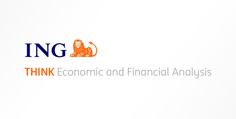The upward pressure on rates is relentless as central banks are seen to act more aggressively. The trade-off for risk assets and spreads is clear, but for now tackling inflation takes precedence. Whether all priced tightening will be realized is a question for later and curves can flatten further.
Last week’s US inflation print showed that there is no let up for central banks. For tomorrow’s Fed meeting, markets are now contemplating a high probability of a 75bp move.
While it is the front end that has led the way higher, the 10Y US Treasury yield still rose by almost 20bp at the start of this week—pushing it towards 3.40% and thus its highest level since 2011.
The European Central Bank had turned more hawkish last week, and market pricing suggests it is viewing the ECB as finally moving in the right direction to get on top of the inflation problem.
The pricing of rate hikes is turning more aggressive with a cumulative rate increase of more than 165bp by the end of the year. Markets see a high probability for a 50bp hike not only in September, but also in October. EUR long end rates get dragged higher as well with the 10Y Bund yield surpassing 1.6% yesterday.
The trade off of central bank tightening
EUR money markets curves establish a more noticeable hump
Obviously, tighter monetary policies does not come without cost. Concerns over the longer term economic outlook increase and risk assets come under rising pressure.
As rates shift higher, this is reflected in the significant flattening of yield curves, though not yet in outright flight to safety. The 2Y-10Y US Treasury yield curve has inverted which many see a signaling a recession further down the road.
In EUR, we have seen the money markets curves establish a more noticeable 'hump' around late 2023 to early 2024 in its ECB rate expectations. This expected topping out of the tightening cycle, in EUR now at just below 2.50%, then followed by the emergence of rate cut speculation, is something we had thus far only seen in the pricing for the Fed and Bank of England.
Tackling inflation takes precedence over sovereign spreads
A trade-off that is of particular concern in the eurozone is that of widening peripheral bond spreads. The key spread between 10Y Italian and German government bonds has widened from 220bp towards 240bp in tandem with the overall rise in interest rates over the past three sessions.
This mode may well continue as long as the ECB refrains from providing more detail on how it intends to tackle the risks of fragmentation in eurozone bond markets. In the past, the ECB has shown some discomfort when the spread rose past 250bp. But it is also a matter of how we get to that level—sharp increases are certainly more worrisome than a steady widening.
The past three sessions saw a widening of 40bp in total. Still, the ECB’s Simkus yesterday basically confirmed the central bank's stance that tackling inflation takes precedence over sovereign spreads.
According to a sources story published later yesterday it is a broader view of the Council that there is no benefit of preemptively revealing details of their anti-fragmentation plans.
Will the priced tightening come to pass?
Of course, more signs of a deteriorating growth outlook would mean not only that the window to deliver on the priced tightening cycle in full will close, but also that central banks will then have to tread more carefully.
Markets' aggressive pricing and the widening spreads is doing part of the central banks’ job
Markets' aggressive pricing and the widening spreads is doing part of the central banks’ job as financial conditions are already tightening considerably. This also means that central banks may eventually not have to do as much as is priced. Our own economists for instance still see the ECB hiking by only 100bp through early 2023.
But near term, central banks may show little desire to turn more dovish just yet. Quite the opposite, as long as inflation remains their primary concern. While the front end of yield curves remain susceptible to ever more aggressive pricing of central bank tightening, it puts the back part of yield curves in the position to express fears over the economic outlook for now.
Today’s events and market view
As markets brace for rates increases from the Fed and BoE later this week, the trend towards higher yields may still extend. Supply may add to the pressure near term. Germany will sell €5.5bn in its 2Y benchmark, but especially the Netherlands’ taps of the 20Y Green bond today for up to €5bn and also the mandated new EFSF 10Y bond could weigh on the market.
Italy will auction 3Y, 7Y and 30Y bonds today for a total of up to €6bn. To the extent that this supply may have also weighed on the market we could see some recovery in spreads after the auction, but the overall issue remains the ECB’s reluctance to address the fragmentation with more than just words.
The market should continue to test the ECB’s pain threshold on the matter and will scrutinize ECB officials’ comments for signs of changing strategy.
In data, Germany will see the release of the ZEW which is seen improving somewhat. In the US, the main focus should be on the NFIB small business optimism survey as well as the US PPI release.
Disclaimer: This publication has been prepared by ING solely for information purposes irrespective of a particular user's means, financial situation or investment objectives. The information does not constitute investment recommendation, and nor is it investment, legal or tax advice or an offer or solicitation to purchase or sell any financial instrument. Read more
